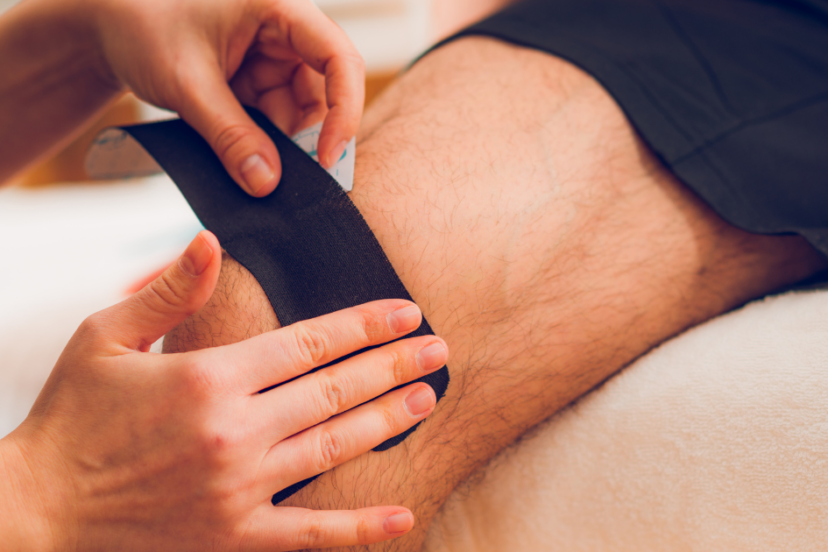Knee Strap – Support and Stability for Active Lifestyles
When it comes to engaging in physical activities, having proper support and stability for your knees is crucial. Knee straps are a popular accessory that can provide the necessary support to the knee joint and help prevent injuries. In this article, I will guide you through the benefits of using a knee strap, explain the different types available, and offer helpful suggestions for choosing and using the right knee strap for your needs.
Knee Strap: Enhancing Performance and Preventing Injuries
They are designed to provide support and stability to the knee joint during physical activities. By exerting gentle pressure on specific areas around the knee, they help alleviate pain, reduce stress on the tendons, and promote proper alignment. Whether you’re an athlete, fitness enthusiast, or simply someone with an active lifestyle, wearing a knee strap can make a significant difference in your performance and injury prevention efforts.
Types of Knee Straps
There are different types of knee straps available on the market, each with its own unique features and functions:
1. Patellar Straps: These straps are specifically designed to target the patellar tendon, providing support to the kneecap and reducing strain on the surrounding muscles and tendons.
2. Compression Straps: Compression knee straps provide overall compression to the knee joint, promoting blood circulation, reducing swelling, and enhancing stability.
3. Stabilizing Straps: Stabilizing straps offer a combination of support and compression, targeting multiple areas of the knee to enhance stability and reduce the risk of injuries.
Factors to Consider When Choosing a Knee Strap
When selecting one, it’s important to keep the following factors in mind:
1. Proper Sizing and Fit: Ensure that the knee strap fits snugly but comfortably around your knee. It should provide adequate compression without restricting your range of motion.
2. Adjustability and Ease of Use: Look for one with adjustable straps or closures that allow you to customize the level of compression and ensure a secure fit.
3. Material and Durability: Choose one made of breathable, moisture-wicking materials that offer durability and longevity. This ensures comfort and effectiveness during prolonged use.
4. Consulting with a Healthcare Professional: If you have specific knee conditions or concerns, it’s advisable to consult with a healthcare professional or physical therapist who can provide personalized recommendations and guidance.
Effective Ways to Use a Knee Strap
To make the most of your knee strap, consider the following suggestions:
1. Proper Positioning and Alignment: Place the knee strap just below the kneecap, ensuring it is centered and snug. This allows for targeted support and optimal effectiveness.
2. Wearing During Physical Activities: Wear the knee strap during activities that exert stress on the knees, such as running, jumping, or weightlifting. It can also be beneficial during activities involving repetitive knee movements.
3. Duration and Frequency: The duration and frequency of wearing a knee strap may vary depending on individual needs and comfort. It’s generally recommended to wear the strap during activities and gradually reduce usage as your knee strength and stability improve.
Benefits of Using a Knee Strap
Using a knee strap can offer a range of benefits:
1. Enhanced Stability and Support: provides external support to the knee joint, reducing the risk of instability and enhancing overall stability during physical activities.
2. Reduction of Pain and Discomfort: The compression and support provided can help alleviate pain and discomfort associated with various knee conditions, such as patellar tendonitis or runner’s knee.
3. Prevention of Common Knee Injuries: By promoting proper alignment and reducing stress on the tendons and ligaments, a knee strap can help prevent common knee injuries, such as sprains or strains.
4. Facilitation of Faster Recovery: When recovering from a knee injury, wearing a knee strap can aid in the healing process by providing support and protecting the injured area, allowing for faster recovery and return to activities.
Real-Life Experiences and Testimonials
Real-life experiences of individuals who have used knee straps can provide valuable insights and inspiration. Many athletes and active individuals have reported positive outcomes and improved performance after incorporating knee straps into their routines. Hearing their success stories and testimonials can motivate and encourage you to explore the benefits of using a knee strap for yourself.
Conclusion
If you’re an athlete, fitness enthusiast, or someone with an active lifestyle, a knee strap can be a valuable accessory to enhance your performance and prevent knee injuries. By providing support, stability, and targeted compression, knee straps can make a significant difference in your comfort, endurance, and overall well-being during physical activities. Consider the different types available, choose a knee strap that fits your needs, and follow the proper guidelines for wearing it effectively. Embrace the benefits of a knee strap and keep moving with confidence and support.
FAQs:
1. Can I wear a knee strap all day long?
It’s generally recommended to wear a knee strap during physical activities or when you anticipate exerting stress on your knees. Wearing it all day may not be necessary or advised unless specifically recommended by a healthcare professional.
2. Can a knee strap replace proper warm-up and stretching exercises?
No, it should not replace warm-up exercises and stretching routines. It is meant to complement proper warm-up techniques and provide additional support during activities.
3. Will wearing a knee strap weaken my knee muscles?
Wearing one during activities is unlikely to weaken knee muscles. In fact, it can provide external support and reduce stress on the muscles and tendons, allowing for more efficient muscle activation.
4. Can a knee strap be used for post-surgical knee rehabilitation?
Depending on the specific surgical procedure and post-operative instructions, a knee strap may or may not be recommended. It’s essential to consult with your healthcare professional or physical therapist for personalized guidance regarding post-surgical knee rehabilitation.
5. How often should I replace my knee strap?
The durability of a knee strap can vary depending on its quality and usage. If you notice signs of wear and tear, such as loss of elasticity or reduced effectiveness, it may be time to replace it.
*We may earn a commission from purchases made through our links, at no cost to you. This does not affect our product recommendations. Please see our disclosure to learn more.
![Urban Health Hive]](https://urbanhealthhive.com/wp-content/uploads/2023/05/cropped-cropped-Health_Logo.png)



